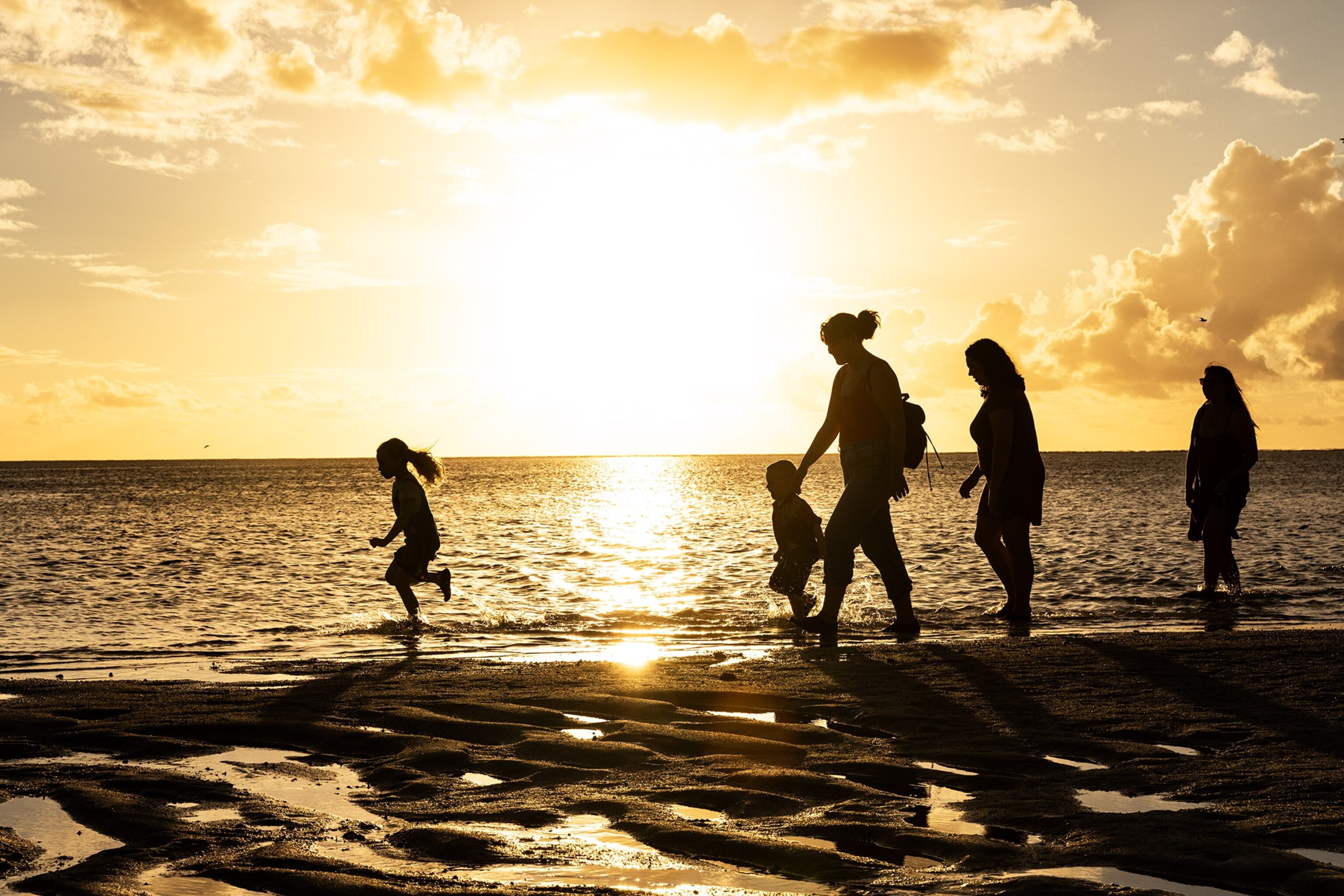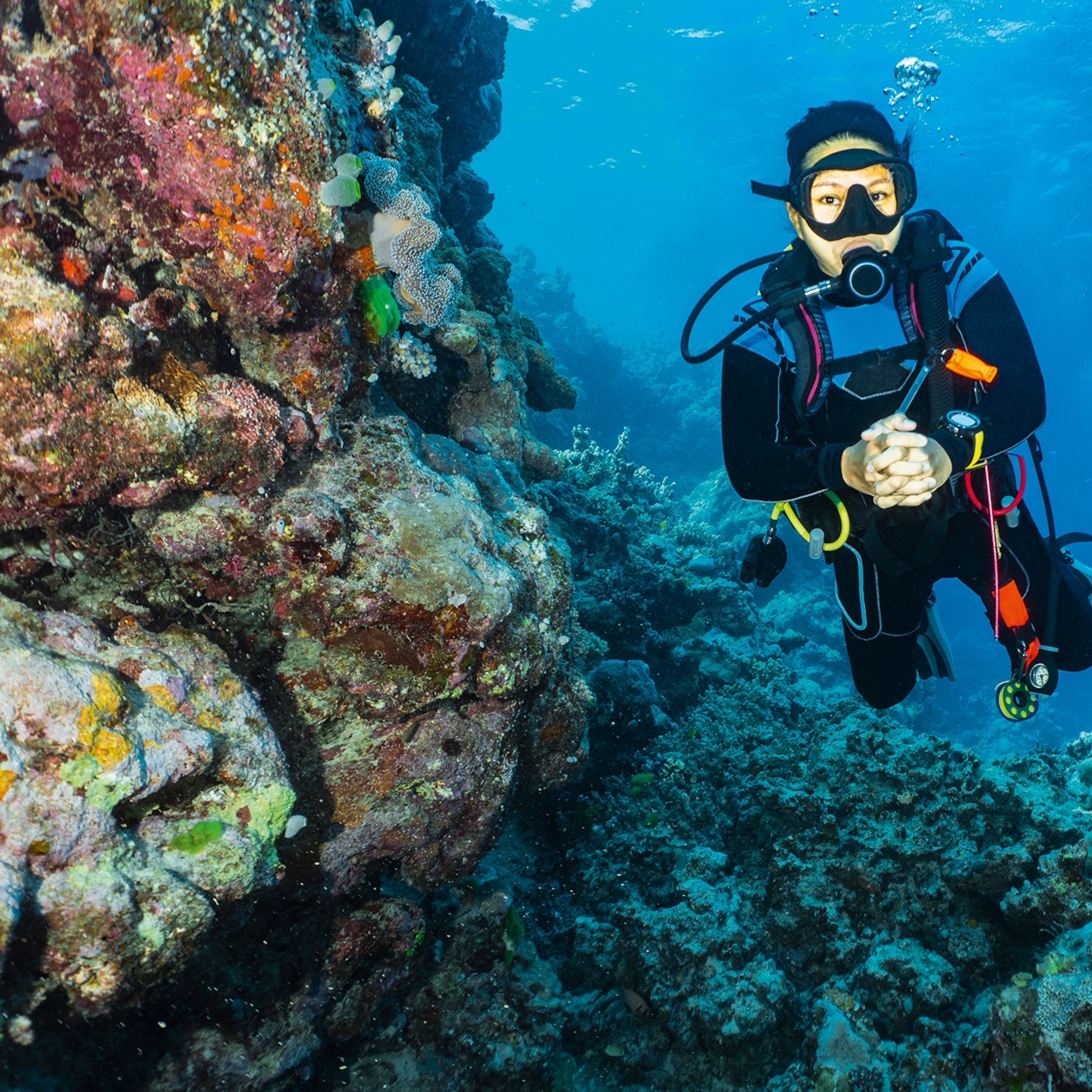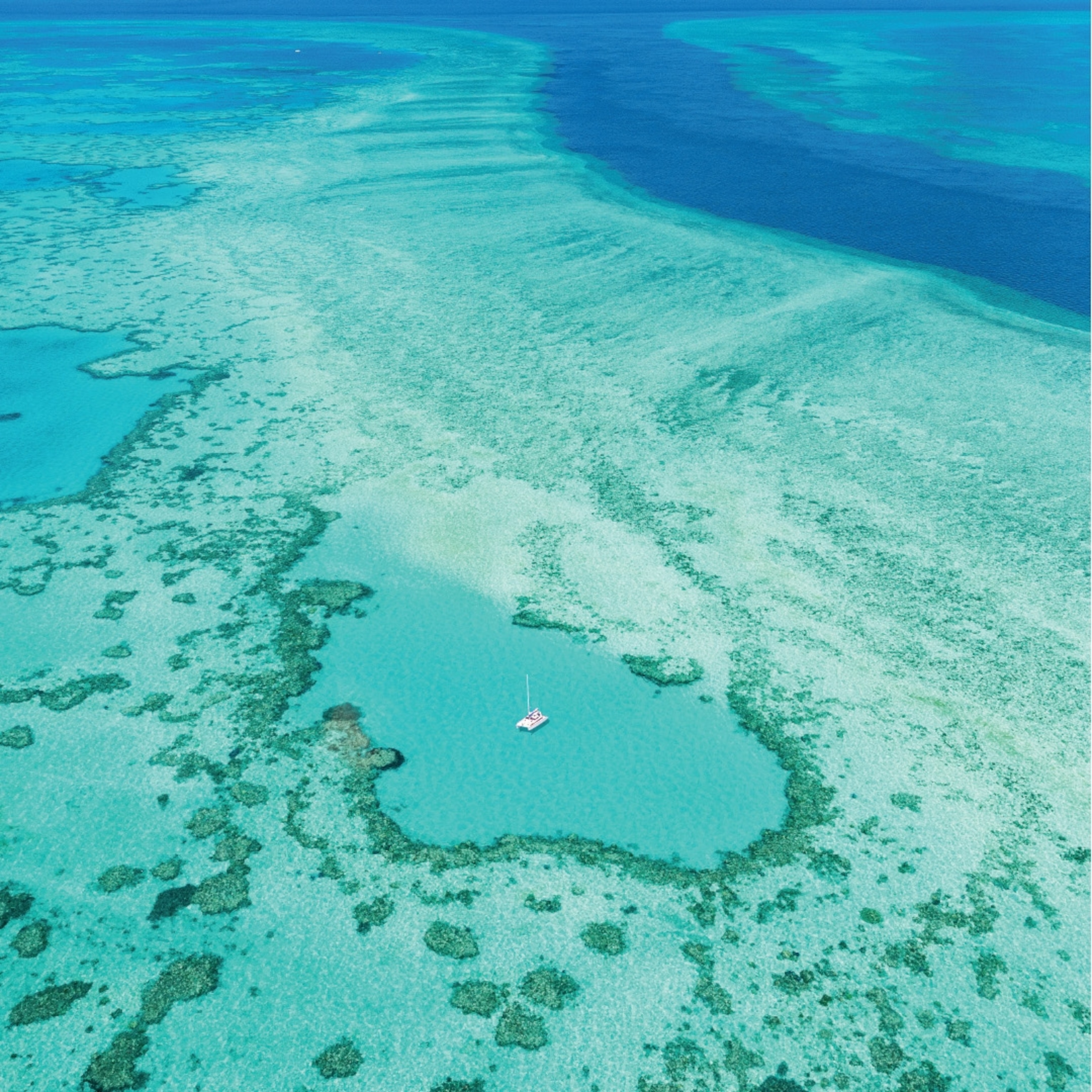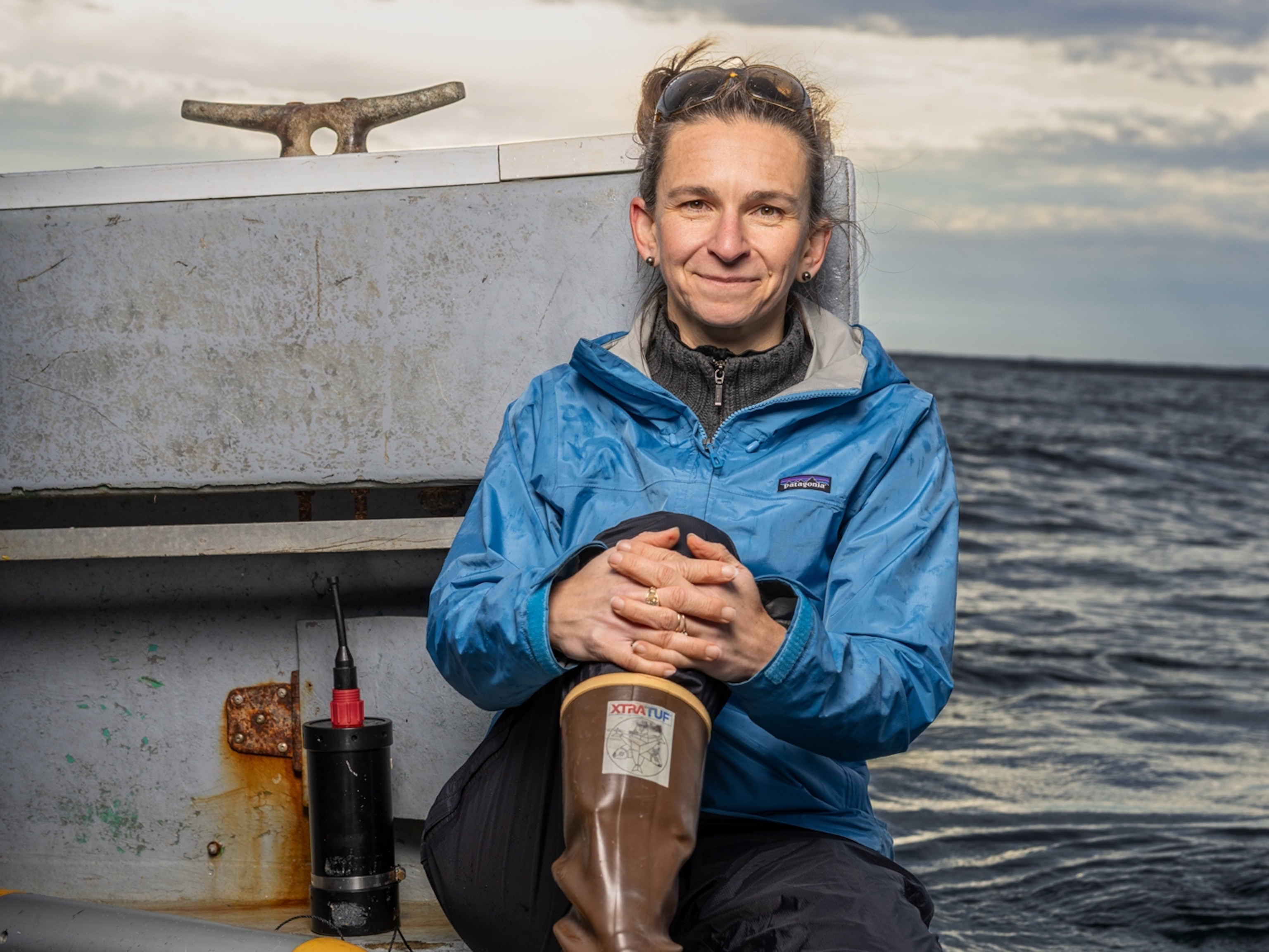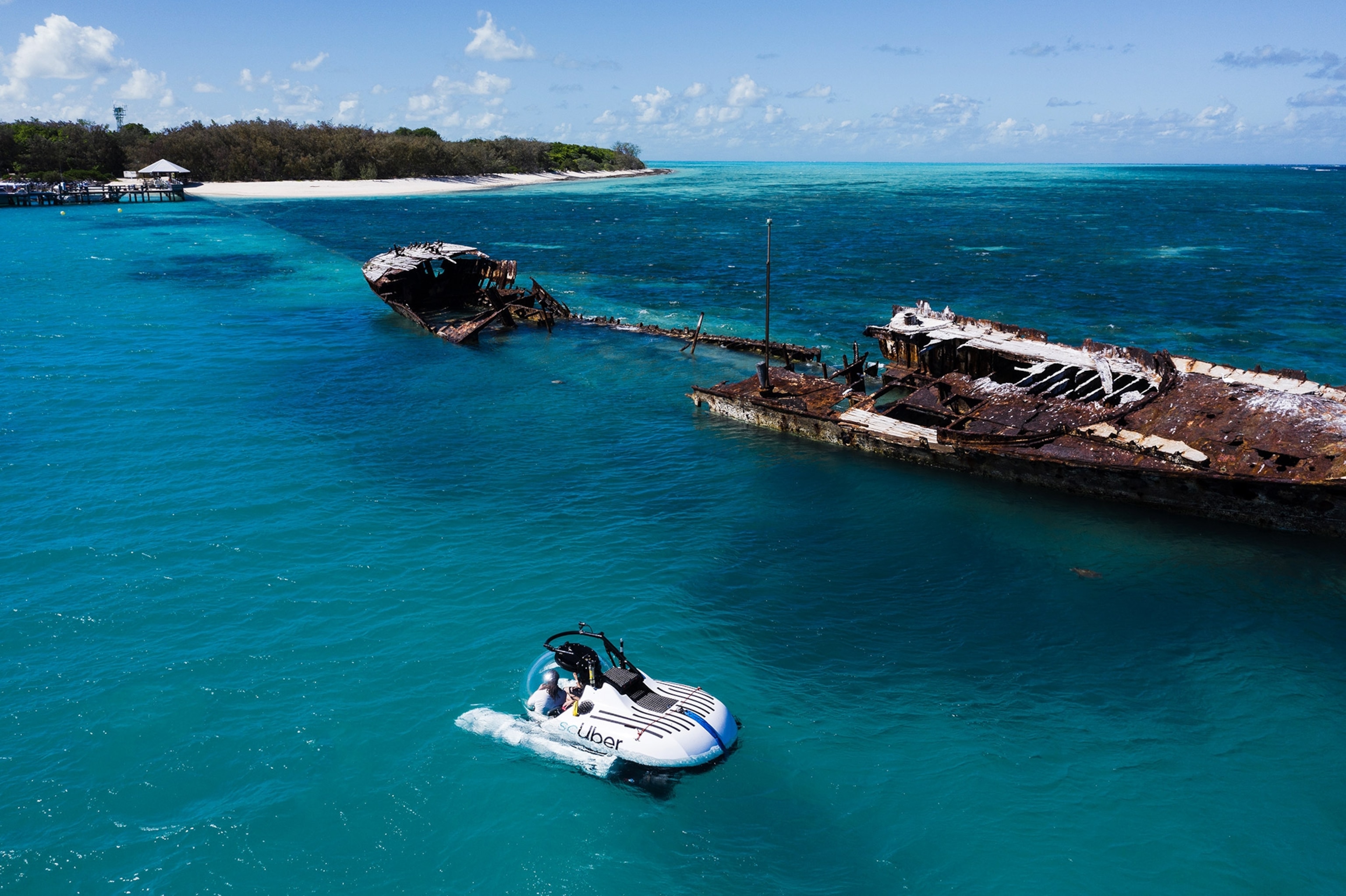
You can now hail an Uber to the Great Barrier Reef
For a limited time, the ride-sharing service will operate a submarine in the world’s largest reef system.
There’s something undeniably Bond-like about lowering yourself through the roof hatch of a mini-submarine. But this is no Hollywood movie. Today, I’m among the first members of the public to ride the scUber—the world’s first underwater Uber—on Australia’s Great Barrier Reef. National Geographic Explorer and pioneering submarine pilot Erika Bergman sits at the wheel (in this case, a PlayStation 4 controller); it’s even better than a Bond movie.
Describing herself as “a scientist with a love of machines,” Bergman studied chemical oceanography while working in the engine rooms of ships before segueing into submarine piloting. The 31-year-old Canadian is now the Chief Pilot for Vancouver-based Aquatica Submarines, and as she expertly maneuvers the scUber (a Stingray 500-01 model sub affectionately known as Barry) below the waves off Heron Island, I can’t think of anyone else I’d rather have as my Uber driver. (Here are 10 more underwater adventures around the world that don't require scuba certification.)
“Piloting a sub is actually quite easy, but it takes a lot of practice, and a lot of multitasking,” explains Bergman as the world’s largest living organism begins to take shape through the aquamarine abyss. While I felt a little claustrophobic in the scUber when it was bobbing on the ocean’s surface before we descended, the spherical acrylic window seems to disappear when we’re underwater, making the cozy cockpit feel almost roomy.
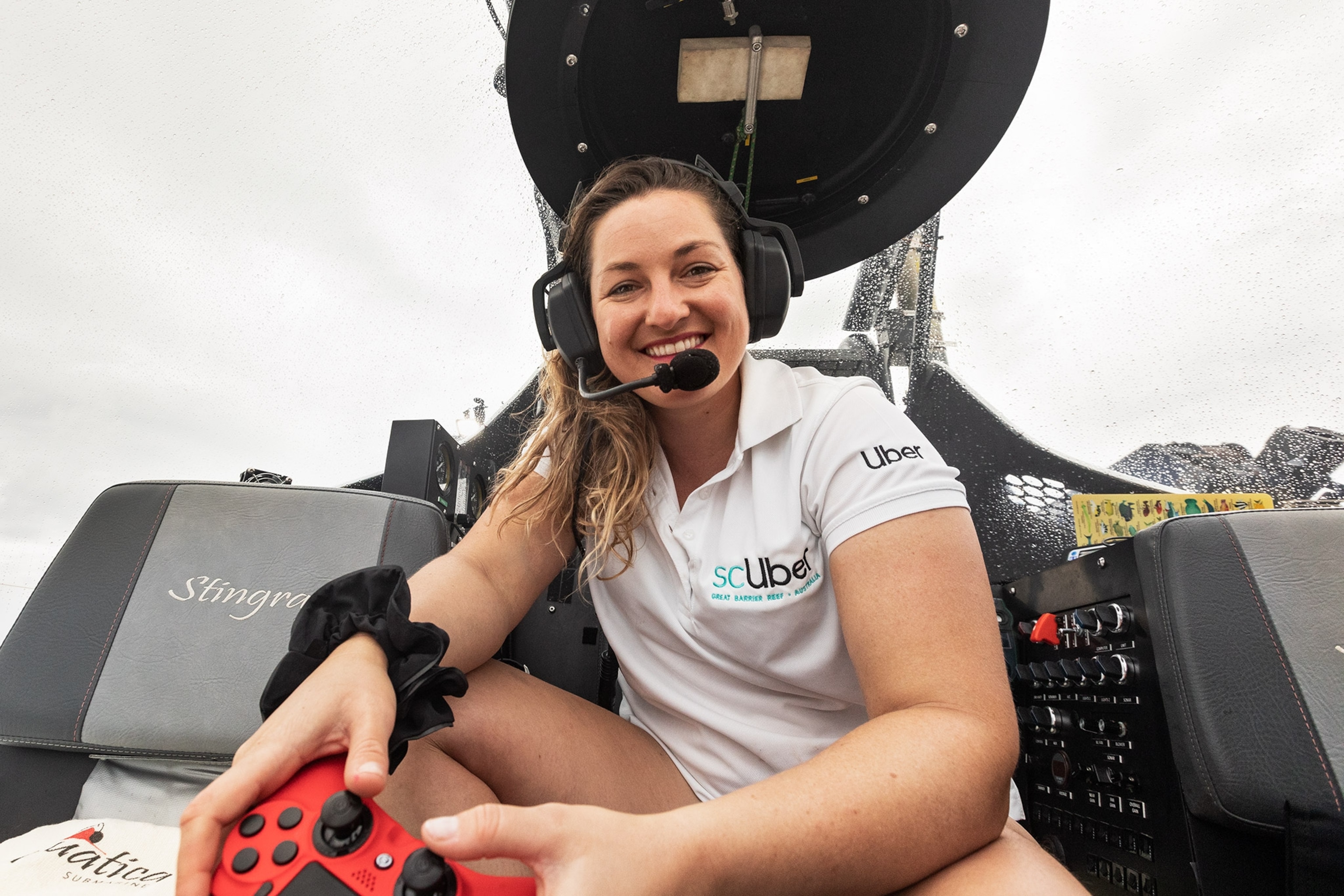
“When you’re diving or snorkeling your peripheral vision is cut off, but in here it’s like you’re in the aquarium rather than standing outside of one looking in,” Bergman says as we cruise at a depth of about 40 feet (the sub has a maximum depth of 500 feet, but will hover between 30 and 65 feet for scUber rides). Indeed, while the curve of the window makes the marine life appear about 30 percent smaller than it actually is, the breadth of vision is one of a kind.
The world’s largest aquarium is a little quiet this afternoon, with the changing tide limiting visibility to less than 30 feet, and the huge green turtle spotted by Bergman’s first passengers of the day now nowhere to be seen. But there’s still plenty going on. As we make a pass alongside the reef wall, the scUber is enveloped by a school of yellow-tailed fusiliers. Edging closer, we spot a gaggle of of tiny blue chromis fish shimmering in the sunlight as black-and-white-striped banner fish dart between the spiky stag corals beneath them. So unbothered is the marine life by our presence that even the multicolored giant clams that typically slam shut when divers glide by don’t even flinch when we hover over them. (Read more about the Great Barrier Reef, a UNESCO World Heritage site.)
Relegated to simply pointing at cool marine life when I’m scuba diving, the ability to discuss what we’re seeing—while staying warm and dry—is a luxury. And with cameras in the scUber rolling on every trip, scUber passengers also make a contribution to reef science without even knowing it.
“Citizen science tourism is a fantastic way of subsidising research,” says Bergman, who piloted the Stingray on a groundbreaking expedition to the bottom of Belize’s Great Blue Hole last December with Richard Branson and Fabien Cousteau, grandson of the famous ocean explorer Jacques Cousteau. Following the scUber’s tenure on the Great Barrier Reef, Bergman will travel to the British Virgin Islands to work with Unite BVI, a not-for-profit supported by Branson. “Selling some tourist seats will help to find a baseline study of the reef since Hurricane Irma blew through (in 2017) to give us an idea of how quickly the reef can recover after such catastrophic weather events,” Bergman says.
Before I know it, our hour is up, and as we near the surface, I’m surprised to discover that my ears pop just as they do when I’m on an airplane coming into land. Having also discovered that my sensitivity to motion sickness also applies to submarines, I’m somewhat relieved to climb out of the scUber. I can’t deny, however, that it was one hell of a ride.
“Don’t forget to rate your driver,” winks Bergman.
How to take the scUber ride
Rideshare company Uber partnered with the Australian state of Queensland and the Citizens of the Great Barrier Reef for this limited time experience from May to June 2019. Riders in select Australian cities may request the scUber through the app for approximately $2,070 for two people, including a round-trip helicopter flight from Queensland to the submarine's locations in Heron Island or Port Douglas, plus a one-hour tour of the Great Barrier Reef in the submarine vessel. Proceeds will help the Citizens of the Great Barrier Reef, a network of locals, influencers, and organizations working to conserve the vital habitat battling climate change and other threats. Based on the success of the inaugural ride, scUber may become an annual offering in the Great Barrier Reef or expand to other locations worldwide.
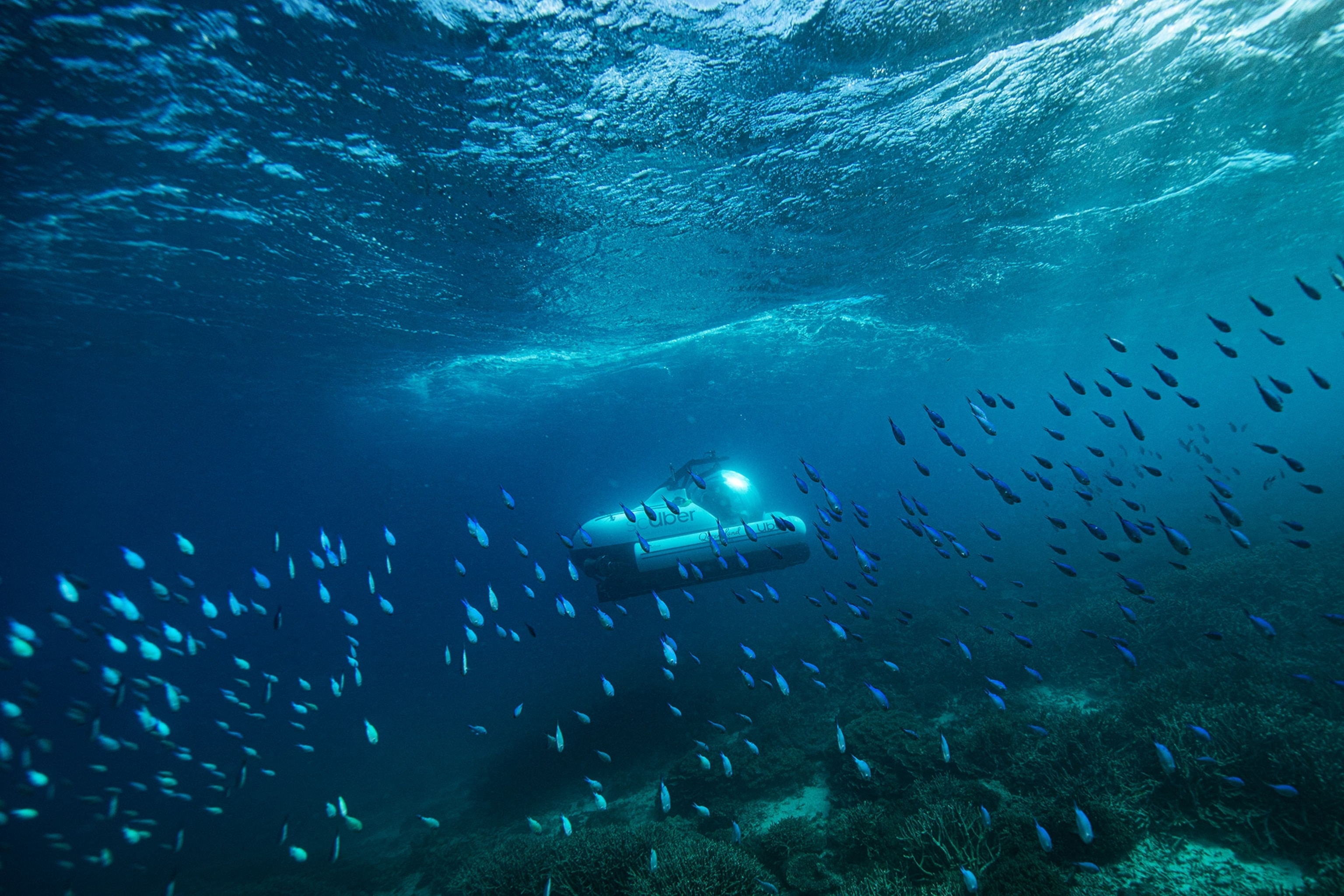
Plan your trip: Heron Island
Get there: Take a 30 minute helicopter ride or sail two hours by catamaran from Gladstone, Queensland to Heron Island Resort. The scenic route past iridescent coral reefs gives travelers a taste of what’s to come when visiting Heron Island.
Iconic water: Upon arrival, don a pair of reef shoes (provided by the resort) for a walk around the petite island, less than half a mile long, surrounded by crystal blue water teaming with fish, baby reef sharks, various corals, and crabs.
Birding stop: Not to be outdone, birds dominate the sound of the island. During the summer months, see the migration of some 200,000 birds, such as egrets, white-bellied sea eagles, buff banded rails, and white capped noddy’s.
Go deep: Take a tour of the University of Queensland Research Station led by scientific officer Sam Morison, who will reveal the latest scientific research in the area, then introduce you to the touch tank where you can encounter coral and small animals up close. All animals are returned to the reef unharmed.
Insider tip: Start the day off early with a snorkel off the jetty and visit the H.M.C.S Protector, the shipwreck at the entrance of the harbor you’ll find sharks, schools of fish, turtles, various rays and shovel nose guitar fish alongside the healthy coral reef.
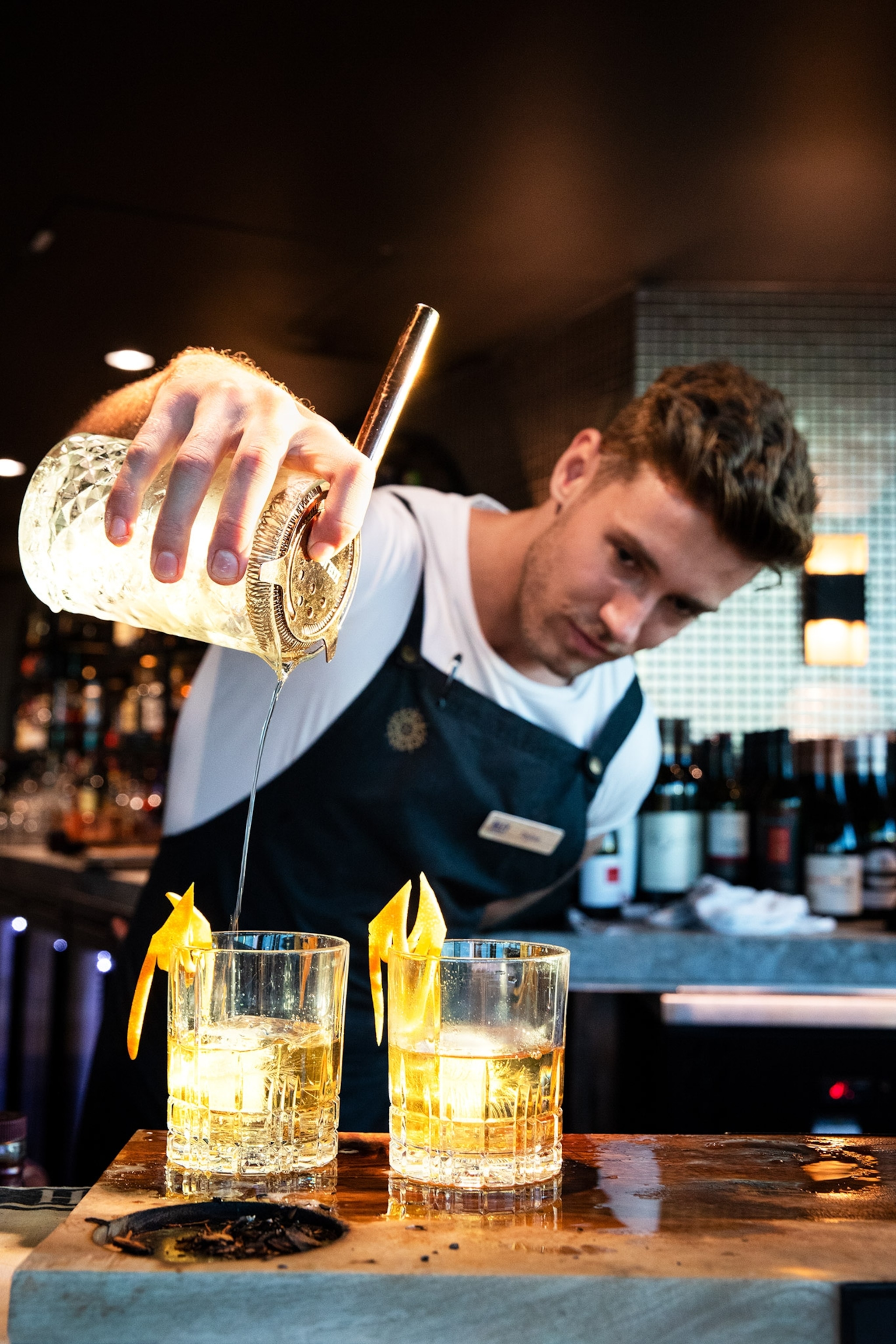
Plan your trip: Cairns
Get there: Considered the gateway to the Great Barrier Reef, this northern Queensland city of 150,000 holds an international airport with domestic flights throughout Australia.
Explore: The esplanade provides a perfect backdrop to evening strolls. Dip in to the night market to nosh on buffet’s of chinese food and pick up trinkets from drawings to imitation designer bags. Full of night life, restaurants, pubs streaming football games and coffee houses stay open into the night.
Stay: Rest your head at the newly opened Riley Hotel and grab a cocktail as the sun goes down on the rooftop restaurant Rocco.
